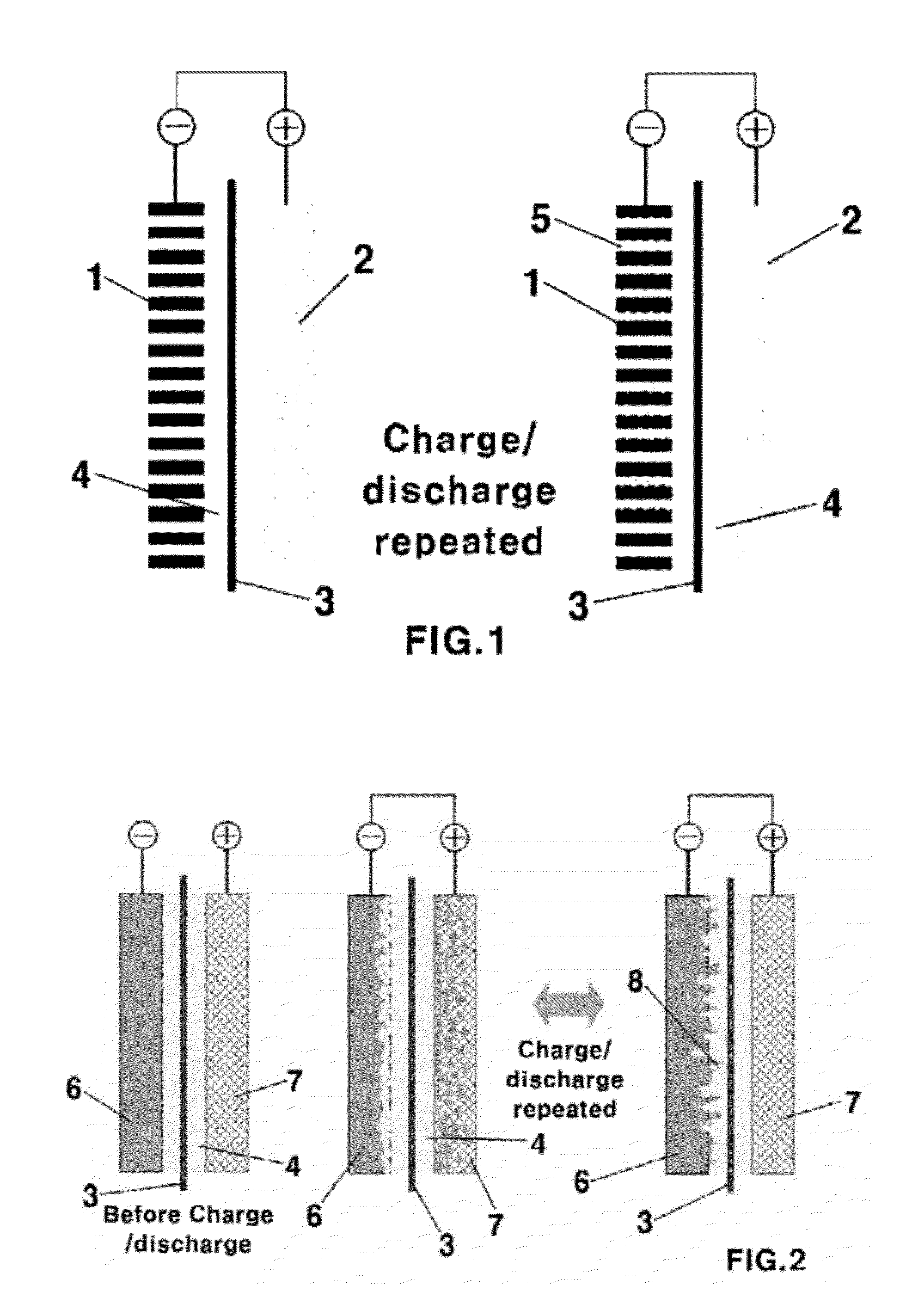Lithium ion-sulfur battery
a technology of lithium ionsulfur and sulfur electrodes, which is applied in the direction of cell components, final product manufacturing, sustainable manufacturing/processing, etc., can solve the problems of reducing charge/discharge efficiency and safety, and achieve the effects of increasing the energy density, improving the capacity of sulfur electrodes, and improving charge/discharge durability
- Summary
- Abstract
- Description
- Claims
- Application Information
AI Technical Summary
Benefits of technology
Problems solved by technology
Method used
Image
Examples
example
[0052]In an exemplary embodiment of the present invention, a lithium ion-sulfur battery is configured by interposing an intercalation electrode 10 between a lithium metal 11 (e.g., Li metal foil, available from Hohsen Corp.) and a sulfur electrode 12 and using an electrolyte 14 (e.g., 1M LiCF3SO3 / 0.5M LiTFSI+DME [1,2-Dimethoxyethane, anhydrous, 99.5%], available from Aldrich Chemical Co.) and a separator membrane 13 (e.g., Celgard 2325, available from Celgard Inc.).
[0053]Here, the sulfur electrode 12 is formed into a positive electrode using 70% sulfur (e.g., 100 mesh, available from Aldrich Chemical Co.), 15% conductive carbon (e.g., Ketjen Black EC-300J, available from Mitsubishi Chemical Corp.), and 15% binder (e.g., PVdF available from Kynar).
[0054]Moreover, the intercalation electrode 10 may be formed by coating graphite on a copper metal in the form of a mesh.
[0055]After manufacturing a battery cell in the above manner, the intercalation electrode 10 and the lithium metal 11 a...
PUM
 Login to View More
Login to View More Abstract
Description
Claims
Application Information
 Login to View More
Login to View More - R&D
- Intellectual Property
- Life Sciences
- Materials
- Tech Scout
- Unparalleled Data Quality
- Higher Quality Content
- 60% Fewer Hallucinations
Browse by: Latest US Patents, China's latest patents, Technical Efficacy Thesaurus, Application Domain, Technology Topic, Popular Technical Reports.
© 2025 PatSnap. All rights reserved.Legal|Privacy policy|Modern Slavery Act Transparency Statement|Sitemap|About US| Contact US: help@patsnap.com



